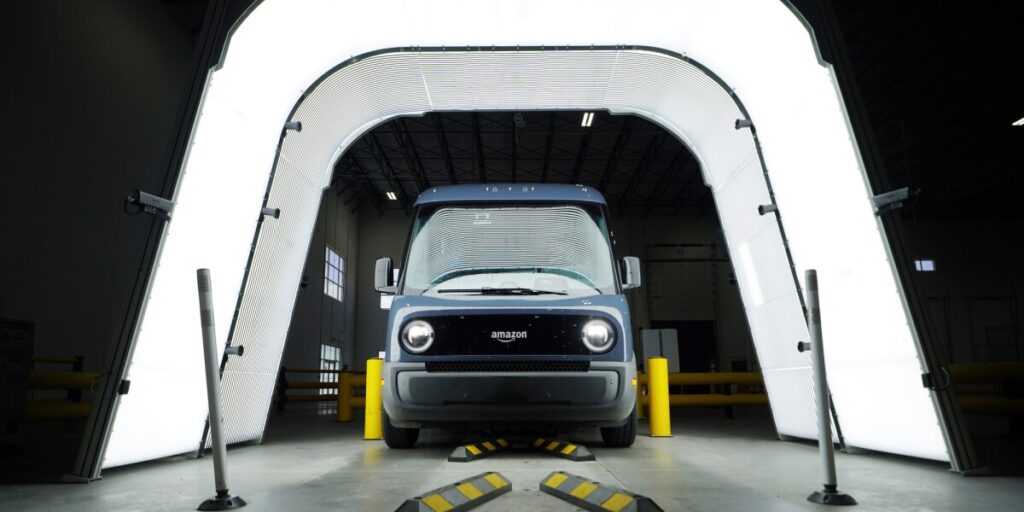In the rapidly evolving landscape of automated vehicle inspections, the integration of Artificial Intelligence (AI) is proving to be a game changer. Advanced Vehicle Inspection (AVI) technology is enabling faster, more accurate, systematic, and objective inspections, which have become crucial for the safety and efficiency of fleet operations. The implementation of AI in this context not only streamlines the inspection process but also uncovers previously hidden damage patterns that manual inspections may overlook.
A critical insight gained from recent data is that 35% of all vehicle issues originate from tires. These tire-related problems can manifest as sidewall tears or foreign objects such as debris or nails lodged within the tread. Such vulnerabilities are often missed during traditional inspections, which can lead to greater safety risks on the road. By utilizing AVI technology, Delivery Service Providers (DSPs) can proactively address these issues. They receive timely notifications to replace tires before minor problems escalate into significant hazards, such as blowouts or flat tires. This level of foresight enhances driver safety, boosts the delivery experience for end customers, and ultimately mitigates potential delays that could affect service levels, especially for companies like Amazon.
However, even the most advanced AI systems are not immune to errors. Understanding the common issues associated with automation is essential for ensuring smooth integration and operation. The main errors typically include system misconfigurations, API rate limits, and integration challenges. Each of these problems can hinder the effective utilization of AI in vehicle inspections.
One prevalent challenge is system misconfigurations, often arising from incorrect setup of the AI parameters. To address this, organizations should engage in a thorough review of the system configurations, ensuring that all AI features are activated correctly. Regular audits can provide opportunities to reassess configurations and identify discrepancies early on. It is also beneficial to maintain up-to-date documentation that outlines the specific parameters and settings utilized within the AI system.
API rate limits can pose another obstacle, particularly when the system experiences a high volume of requests. To mitigate this risk, it’s advisable to implement a queuing mechanism that manages the number of API calls made within a given timeframe. Additionally, monitoring usage patterns can help anticipate peak times in order to adjust the request rate accordingly. Leveraging logging mechanisms can also aid in identifying potential bottlenecks or failures in the API communication flow.
Integration issues are yet another common pitfall that can compromise the effectiveness of AI in inspections. Ensuring seamless connectivity between different software platforms is critical. It is essential to carefully review the integration points and conduct thorough testing of the interfaces. Building a comprehensive integration roadmap can facilitate this process by clearly defining how multiple systems communicate, alongside necessary troubleshooting steps for isolated failures.
The risks associated with failing to resolve these errors promptly can extend far beyond operational disruptions. Unresolved technical issues can lead to inadequate inspections, resulting in costly safety incidents and damaged reputations. Furthermore, a delay in addressing these errors can diminish the ROI of AI investments, negating the anticipated benefits of enhanced operational efficiencies and reduced risks.
To optimize productivity, organizations should establish a dedicated technical support team that is well-equipped to tackle AI-related issues. This team should prioritize rapid response protocols for common problems, alongside ongoing education regarding the latest advancements in AI technology. Continuous training can empower employees to navigate common challenges effectively while fostering a culture of proactive problem-solving.
Finally, organizations should implement feedback loops to gather data on error occurrences, which can inform future improvements. By tracking the frequency and causes of errors, businesses can create more robust systems that reduce the likelihood of similar issues recurring.
In conclusion, the implementation of AVI technology is transforming the landscape of vehicle inspections by delivering faster and more accurate evaluations. However, the successful operation of such AI systems hinges on the careful management of potential errors such as misconfigurations, API limitations, and integration challenges. By addressing these concerns proactively, organizations can ensure operational integrity, enhance safety, and drive substantial returns on their technology investments.
FlowMind AI Insight: Streamlining the integration of AI into inspection processes not only improves operational efficiency but also significantly boosts safety protocols. By adopting a proactive approach to troubleshooting and error resolution, organizations can unlock the full potential of their AI investments, ultimately leading to enhanced service delivery and customer satisfaction.
Original article: Read here
2023-10-17 07:00:00

